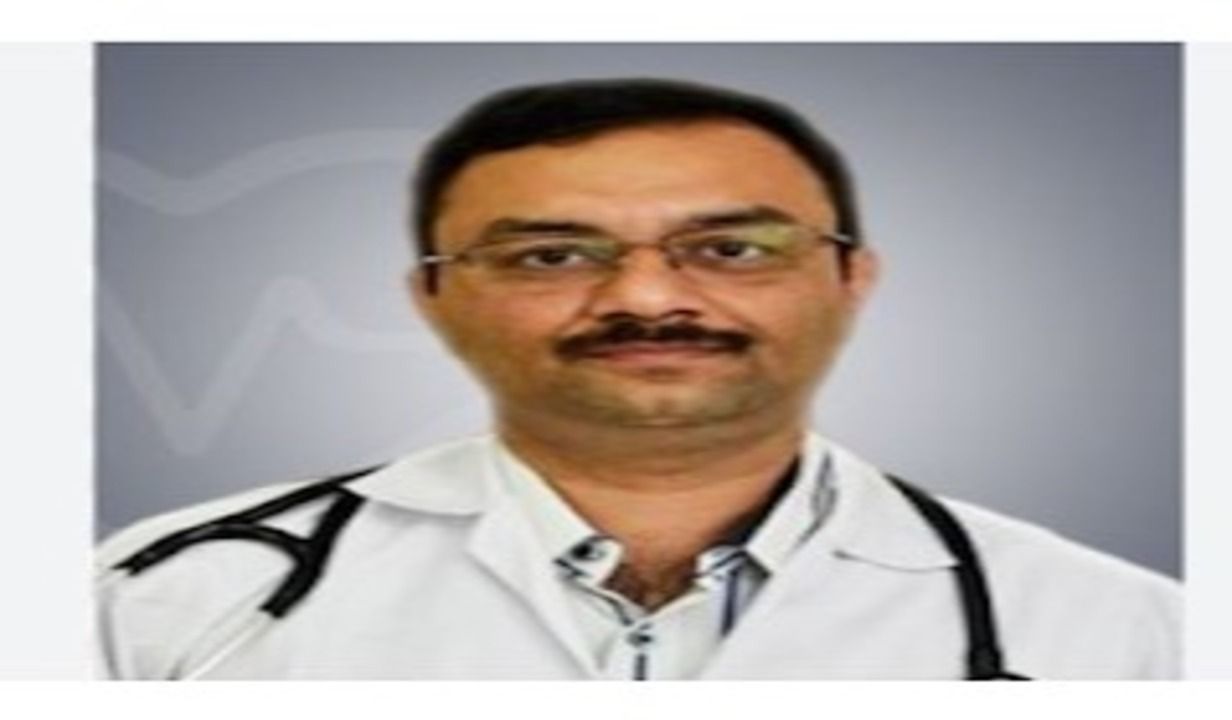Rheumatic Heart Disease: Causes, Risks, Prevention, and More
Learn about the causes of rheumatic heart disease (RHD), its link to rheumatic fever, risk factors, and preventive measures. Discover how early diagnosis and timely treatment can protect heart health.

Written by
Last updated on 3rd Jul, 2025
Rheumatic heart disease is a chronic illness that occurs in the post-acute phase of rheumatic fever and results from previous streptococcal infection. It is defined by fibrosis and permanent structural damage to the heart valves due to inflammation in reaction to an inaccurately treated Group A streptococcal infection.
This valve damage, if left to progress, results in heart failure, arrhythmias and other cardiovascular complications. Most common in developing regions of the globe, where people suffer from inaccessible, timely treatment for streptococcal infections is essential to limit the impact on the heart.
The Connection Between Rheumatic Fever and Heart Disease
Rheumatic fever, a bacterial illness triggered by Group A streptococcal infections, can cause widespread inflammation in the body, including the heart. This inflammation, known as carditis, often acts as a key precursor of various heart diseases, affecting the mitral and aortic valves, leading to thickening, hardening, and calcium deposits.
Over time, such damage disrupts normal blood flow in the heart, resulting in conditions like valve stenosis or regurgitation. Each episode of rheumatic fever exacerbates the damage, underscoring the importance of prompt diagnosis and treatment.
Understanding the Causes of Rheumatic Fever
Group A Streptococcus (GAS) has been identified as the bacteria responsible for respiratory infections. This can be exchanged by coughing, sneezing or through direct contact with an infected person. Infectious diseases associated with GAS include streptococcal pharyngitis, commonly known as strep throat, and scarlet fever.
These infections can worsen rheumatic fever if they are not treated early, especially in kids and the youth. Hence, the progression risk is relatively higher with such groups of the population—those with limited access to healthcare systems or those who take antibiotics later.
In addition, several other factors increase the likelihood of developing rheumatic fever:
Age: Acute rheumatic fever is mainly a disease of children aged between 5 and 15 years.
Socioeconomic Conditions: Streptococcal infections can be caused by overcrowded houses, unhygienic environments, and restricted health care support available to the people.
Genetic Predisposition: Some individuals have a genetic makeup that affects their immune response to GAS infections, amplifying susceptibility or enhancing immunity.
Recurrent Infections: Recurrence of untreated or poorly treated streptococcal infection increases the risk of rheumatic fever and, consequently, the occurrence of heart problems.
Immune Response and Its Role in Rheumatic Heart Disease
Rheumatic heart disease (RHD) develops after an abnormal immune response to a Group A streptococcal (GAS) infection like strep throat. This occurs when fighting bacterial infection, the body’s food cover or immune system starts attacking the body tissues, heart, joints, skin and even the brain. This autoimmune damage is the basis for the lesion observed in RHD.
Antibodies generated in an endeavour to neutralise GAS infections bear risks of cross-reacting on proteins present in cardiac tissue. This results in inflammation and scarring, especially of the valves of the heart leading to chronic dysfunction.
Immune-mediated inflammation within the heart produces inflammation of the inner tissue (endocarditis), the heart muscle (myocarditis), and the outer shell (pericarditis). It causes inflammation in tissue and leads to fibrosis and calcification of the heart valves, making them incapable of controlling blood flow in the body.
Who is at Risk?
Rheumatic fever, which leads to the development of RHD is predisposed by geography, socio-economic and demographic factors.
Geographic and Socioeconomic Factors:
RHD is believed to be most common in low- and middle-income countries where access to appropriate healthcare services is also quite rare.
Dense living spaces and an unhygienic lifestyle influence the spreading of GAS infections.
Limited access to health care results in missed or suboptimal care for strep throat, hence raising the risk of developing complications.
Demographics: Age and Gender:
Rheumatic fever affects children aged between 5 to 15 years most and for this reason, they are most at risk of developing RHD.
RHD occurs in both sexes but is more often reported in women due to variations in the immune system or healthcare access.
Consult Experts for Personalised Care
Pathophysiology of Rheumatic Heart Disease
RHD primarily affects the heart valves but can also lead to other cardiac complications that worsen over time if left untreated.
Valve Damage and Its Long-Term Effects:
The mitral valve is the most frequent site affected, then is the aortic valve. The scarring, together with the thickening and fusion of the valve leaflets by underlying persistent inflammation, contributes to stenosis or regurgitation of the valves.
These pathophysiologic changes interfere with blood circulation and raise the rate of heart failure.
In due course, the valves degrade and cause problems like atrial fibrillation or blood clots, which raise the likelihood of a stroke.
Other Cardiac Complications:
Chronic inflammation may extend beyond the valves to affect the heart muscle, causing cardiomyopathy.
Pericarditis, or inflammation of the heart’s outer layer, may occur during active rheumatic fever episodes.
Infective endocarditis, a serious infection of damaged heart valves, is a common complication in individuals with RHD.
Prevention of Rheumatic Heart Disease
Preventing rheumatic heart disease (RHD) involves addressing the root cause: streptococcal infections. Early diagnosis and effective treatment of rheumatic fever are crucial to stopping the progression to RHD.
Preventing Streptococcal Infections:
Timely treatment of strep throat with antibiotics can eliminate the bacteria and prevent the immune complications that lead to rheumatic fever.
Public health measures, including improving hygiene, reducing overcrowding, and ensuring access to healthcare, are essential for reducing the prevalence of streptococcal infections in high-risk populations.
Early Diagnosis and Treatment of Rheumatic Fever:
Recognising and treating rheumatic fever early can prevent heart inflammation and valve damage.
Long-term antibiotic prophylaxis is critical for individuals who have experienced rheumatic fever to avoid recurrent episodes and further heart damage.
Symptoms to Watch For
It is crucial to be aware of the signs of rheumatic heart disease to have a chance to improve the condition.
Early Signs of Rheumatic Heart Disease:
Fatigue and dyspnea during exertion due to decreased oxygen reaching the tissue.
A discomfort or pain in the chest which can be associated with inflammation or alteration of valves.
Swelling, especially of the lower ankles indicating disrupted blow circulation.
Advanced Symptoms and Complications:
Severe shortness of breath, even at rest, is often a sign of heart failure.
Palpitations or irregular heartbeats indicating atrial fibrillation or other arrhythmias.
Stroke or blood clots resulting from impaired blood flow or valve abnormalities.
These symptoms, whether mild or severe, require medical evaluation to confirm a diagnosis and initiate appropriate treatment.
Conclusion
Rheumatic heart disease is a primary health condition caused by either lack of or inadequate treatment of streptococcal disease. Strep throat and rheumatic fever, when diagnosed early, can be treated to avoid deterioration of the situation and valve disorders.
The prevention of this disease depends on the efforts of public health and measures accompanied by individuals' awareness.
Understanding RHD’s causes, signs, and measures to prevent the condition will serve to enhance results, especially in target groups. With proper health systems, care-seeking practices and education, the community can see the elimination of RHD and improved quality of life for millions of people. As with many illnesses, early intervention is the best form of treatment and the best protection against heart disease.
Consult Top Cardiologists
Consult Top Cardiologists

Dr. Vignesh Thanikgaivasan
Cardiologist
11 Years • MBBS, MD (Gen Med), DM (Cardiology) AFAPSIC, FIMSA, FSCAI
Chennai
Apollo Hospitals Greams Road, Chennai
(75+ Patients)

Prof. Dr. Vivek Gupta
Cardiologist
25 Years • MD, DM, FESC, FEAPCI, FAPSIC,FCSI, FICC, FIC France, FIEIC, FSCAI
Delhi
Apollo Hospitals Indraprastha, Delhi

Dr. Sunil Modi
Cardiologist
38 Years • MBBS,MD (Med.),DM (Cardio)
Delhi
Apollo Hospitals Indraprastha, Delhi
(25+ Patients)

Dr Hasit Joshi
Cardiologist
19 Years • MBBS, MD(MED), DM(CARDIOLOGY)
Ahmedabad
Apollo Hospitals Gandhinagar, Ahmedabad

Dr. Nirmal Kolte
Cardiologist
8 Years • MBBS MD (Medicine) DM (Cardiology)
Nashik
Apollo Hospitals Nashik, Nashik
Consult Experts for Personalised Care

Dr. Vignesh Thanikgaivasan
Cardiologist
11 Years • MBBS, MD (Gen Med), DM (Cardiology) AFAPSIC, FIMSA, FSCAI
Chennai
Apollo Hospitals Greams Road, Chennai
(75+ Patients)

Prof. Dr. Vivek Gupta
Cardiologist
25 Years • MD, DM, FESC, FEAPCI, FAPSIC,FCSI, FICC, FIC France, FIEIC, FSCAI
Delhi
Apollo Hospitals Indraprastha, Delhi

Dr. Sunil Modi
Cardiologist
38 Years • MBBS,MD (Med.),DM (Cardio)
Delhi
Apollo Hospitals Indraprastha, Delhi
(25+ Patients)

Dr Hasit Joshi
Cardiologist
19 Years • MBBS, MD(MED), DM(CARDIOLOGY)
Ahmedabad
Apollo Hospitals Gandhinagar, Ahmedabad

Dr. Nirmal Kolte
Cardiologist
8 Years • MBBS MD (Medicine) DM (Cardiology)
Nashik
Apollo Hospitals Nashik, Nashik

